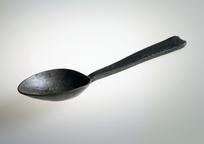

Handcuffs, iron, possibly French
- Made:
- 1801-1900

Handcuffs, iron, possibly French, 19th century. known as 'French Bicycle Handcuffs'.
Handcuffs are almost synonymous with modern punishment, but they are not a modern invention. The first recorded mention of wrist restraint is in Greek mythology: in Virgil’s poetry from 70BC where he discusses preventing Proteus from shape shifting. The earliest metal handcuff examples date from the Bronze and Iron ages, and there have been many different designs throughout the years, with over 3000 search results coming up for handcuffs since 1860 on the European patent office’s website.
This set of handcuffs is very unusual, seeming to combine several handcuff designs such as the figure 8 and the Italian ‘Bagno’ design. This design is known as ‘French Bicycle Handcuffs’, but it is unknown where this name came from or where the design originated. It is possible the bike chain was used as it provided more flexibility, but this provided potential for the prisoner to escape. They locked through a twist mechanism, with a key similar to what you would bleed your radiators with slotting into the round end.
France were early adopters of the idea of a Police force when Louis XIV searched for individuals who could 'protect' Paris in 1667. The French media has been banned from showing images of people in handcuffs in the past, due to the risk of jeopardising the right for everyone to be treated as ‘innocent until proven guilty’.
Details
- Category:
- Wellcome (general)
- Collection:
- Sir Henry Wellcome's Museum Collection
- Object Number:
- A636456
- Materials:
- iron
- type:
- handcuffs
- credit:
- Wellcome Trust (Purchased from Stevens)




